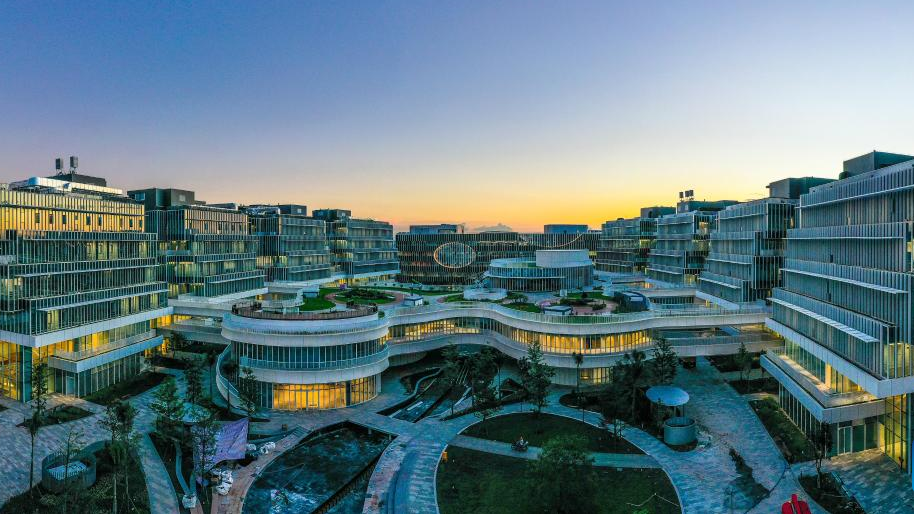Yangtze River Delta boosts integration through digitalization
SHANGHAI, Aug. 19 (Xinhua) -- China's Yangtze River Delta, one of the country's economic hubs, is accelerating its digital transformation and making new progress based on 5G networks.
By the end of June this year, some 430,000 5G base stations had been built in the region, accounting for about a quarter of the country's total, said Hua Yuan, deputy secretary-general of the Shanghai municipal government and director of the regional cooperation office of the Yangtze River Delta.
In addition, the delta region -- which falls within the ambit of Jiangsu, Zhejiang and Anhui provinces, and the city of Shanghai -- has organized and implemented more than 1,300 5G+ industrial internet integration and application projects.
In November 2018, the integrated development of the delta region, which is also the country's largest city cluster, became a national strategy. Meanwhile, the GDP of the region has increased from 22.1 trillion yuan (about 3.25 trillion U.S. dollars) in 2018 to 27.6 trillion yuan in 2021.
The region also shoulders the responsibility of being a pioneer in China's technological and industrial innovation.
In the process of moving towards higher quality integration, the Yangtze River Delta region actively seizes the commanding heights of scientific and technological competition and future development by accelerating the construction of a collaborative innovation system, said Hua.
The latest data from the regional cooperation office of the Yangtze River Delta shows that the scale of the integrated-circuit industry in the region accounts for about 60 percent of the national total, and the region's artificial intelligence (AI) industry takes up approximately one-third of the country's total. It also manufactures some 38 percent of China's new energy vehicles.
"We are keenly aware that national strategies are not abstract, but concrete. The integrated development of the Yangtze River Delta region has achieved remarkable results," said Hua.
One of the important purposes of integrated development is to improve the quality of work and life of the people in the region, according to Hua.
Furthermore, digitalization is being integrated into the lives of more than 230 million residents in the delta region. Online services have been provided to the public to facilitate procedures such as household registration transfers and the cross-province settlement of medical bills.
iFLYTEK, an AI and speech-technology giant in China, is witness to and beneficiary of the integrated development of the delta region.
As of mid-August this year, the iFLYTEK Open Platform has gathered more than 767,000 developer teams in the Yangtze River Delta region, with a total of 364,000 applications developed and 498 technical capability items opened to the public.
In addition, the company is also establishing innovation institutions in the region, carries out cooperation and joint research with regional research institutes and universities, and conducts research on key AI technologies.
"We are promoting the Yangtze River Delta to jointly build an interactive mechanism for collaborative AI innovation and promote the free flow of innovation elements," said Xu Jiajia, secretary-general of the AI industry chain alliance of the Yangtze River Delta region.
Photos
Related Stories
- Chinese vice premier calls for new strides in Yangtze River Delta integration
- New yuan loans rise in Yangtze River Delta in November
- New growth drivers boost foreign trade in China's Yangtze River Delta
- Chinese vice premier stresses pushing integrated development of Yangtze River Delta
- Cafe witnesses development of Yangtze River Delta
Copyright © 2022 People's Daily Online. All Rights Reserved.









